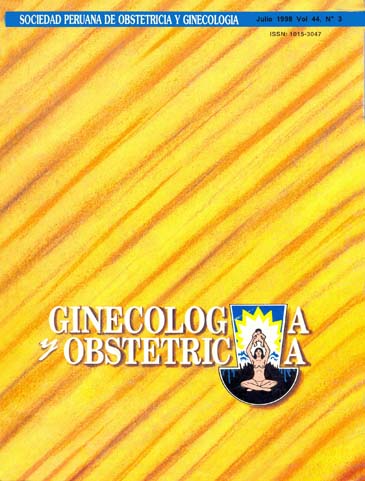Vaginal fistulas: 173 cases observed in 18 years
DOI:
https://doi.org/10.31403/rpgo.v44i959Abstract
OBJETIVE To determine the cause of the most frequent vaginal fistulae. To recognize and compare treatment and results of the cases in study. DESIGN: Descriptive, and retrospective series of cases. LOCATION. Arzobispo Loayza Hospital. RESULTS: 173 patients with vaginal fistulae were analyzed (1980 199 7) with an average of 9,6 cases per year, Half of the patients came from provinces. The main causes were abdominal hysterectomy, 43%, and prolonged labor in 41% of the cases. The most frequent types of fistul were vesico vaginal (57%), vesico recto vaginal (16,2%) and uretero vaginal (12%); 70% of VVF that were cured were treated within 4 and 24 months and the vaginal fístulae within 2 and 6 months. The rate of failure was 8%, mainly with the extended VVF. In the treatment of VVF, the thansabdominal approach has been more frequent than transvaginal repair. CONCLUSIONS. The neglected dystocic delivery is still one of the most important causes of vaginal fistula. Maternal care in the furthest places must be improved.Downloads
Download data is not yet available.
Downloads
Published
2015-06-19
How to Cite
Sandoval, J., Santa, C., & Paz, P. (2015). Vaginal fistulas: 173 cases observed in 18 years. The Peruvian Journal of Gynecology and Obstetrics, 44(3), 208–215. https://doi.org/10.31403/rpgo.v44i959
Issue
Section
Artículos Originales
















